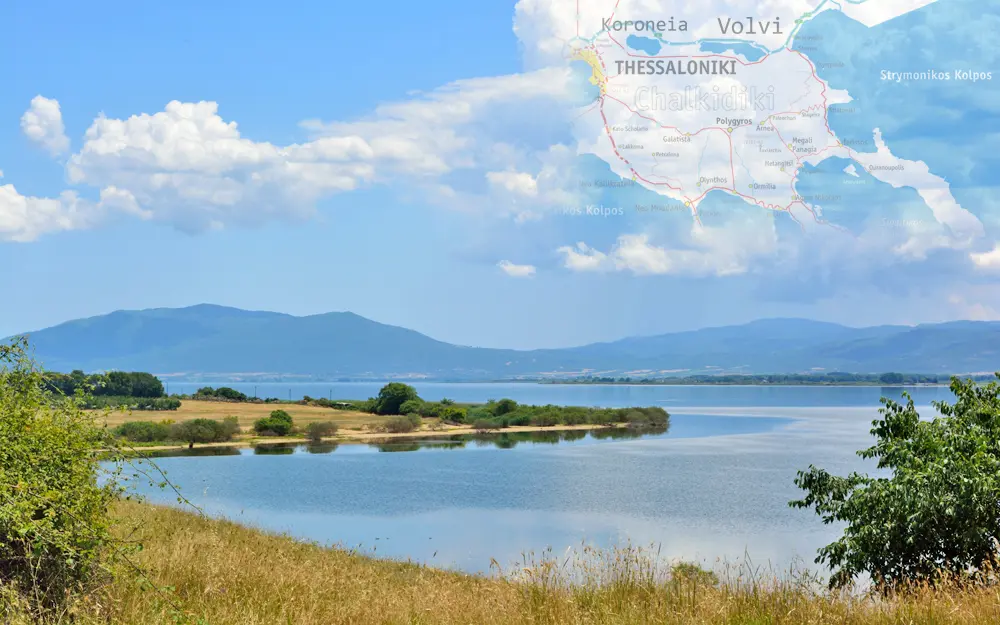Lake Volvi

General data
- Name: Lake Volvi
- Water system: Aegean Sea
- Water type: Natural lake
- Progression: Richeios river -> Aegean Sea -> Mediterranean Sea -> Atlantic Ocean -> Planet Earth
- Climates: Subtropical
- Continents: Europe
- Countries: Greece
Lake Volvi is located in the root of the Chalkidiki peninsula, in the Thessaloniki regional unit of Greece. It is the second largest lake in the country at 12 miles (19 km) in length, and 6 or 8 miles (9.7 or 12.9 km) wide. The area is 68 km² and the depth is 20 m. It is located east of Lake Koroneia (Lake Langadas). The Roman road Via Egnatia runs along the northern shore of the lake, while a more ancient road ran along its southern one. On its east is the narrow valley of Rentina, also known as the Macedonian Tempe. The municipalities of Volvi and Langadas have shoreline on the lake. About a million years ago, Lake Volvi, Lake Koroneia and the entire Mygdonia formed a single huge lake. In the antique description by Thucydides, Bolbe was the name of a lake in Mygdonia, located near the Aegean Sea. The lake emptied itself into the Strymon Gulf by means of a stream flowing through the pass once known as Aulon or Arethusa. The name of the stream is not mentioned in the description, but it is evidently the Erechios (Romanized as Rechius) mentioned in scholar Procopius' work, De aedificiis. Among the smaller streams flowing into the lake, Ammites and Olynthiakos are also mentioned. The perch (labrach) of the lake were particularly admired by the gastronomic poet Archestratus. Per Greek mythology, the lake goddess or nymph Bolbe dwelled in Lake Volvi.

 English
English
 Spanish
Spanish
 German
German
 French
French
 Serbian
Serbian
 Russian
Russian

